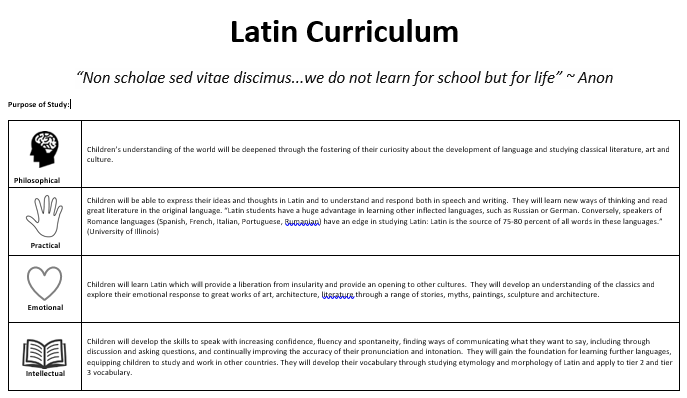Latin
"Non scholae sed vitae discimus ….we do not learn for school but for life" ~ Anon

Why we teach Latin in Key Stage 2.
Size Matters. A word hoard of about 50,000 – 60,000 is the vocabulary pupils need to have gathered when they leave school to thrive academically and beyond. We know that 60% of our English lexicon (a fancy name for vocabulary) is drawn from a combination of Latin and Greek origins, with the more technical vocabulary of school reaching even higher to something like 90%.
A single Latin root can generate over 100 words. So, 10 roots can give a child more than 1,000 words they can decrypt on their own.
Compelling stuff. And it’s just one of the reasons why we at Compass Primary Academy are taking the leap to begin teaching all Key Stage 2 children Latin, that compliment our History curriculum.

In the teaching of History, we use words such as ‘democracy’ and ‘monarchy’ – but do we really help pupils make rich connections between these words? The suffix ‘cracy’ means ‘power’, ‘Demo’ means ‘people’ (so ‘people power’) Then ‘archy’ meaning ‘rulership’, and ‘mono’ means one/alone (so one person ruling).
The word ‘science’ itself comes from the root ‘skein’ meaning ‘to cut’. You can see it hidden in words like ‘scythe’ and ‘scissors’ but also in the word ‘science’ meaning ‘separating out’ information.
We want our children to have a deeper connection with words and their origins. To do this, we use Minimus, a Latin scheme approved by Classics for All, (https://www.minimuslatin.co.uk/).
